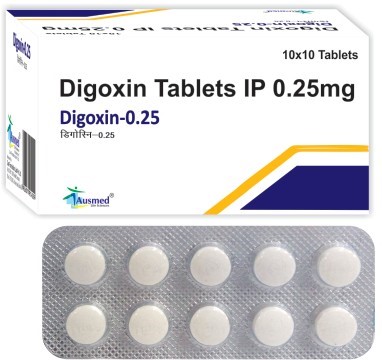A patient with atrial fibrillation and a serum potassium level of 3.0 mEq/L takes digoxin (Lanoxin), ASA (aspirin), KCL (potassium chloride), and warfarin (Coumadin) daily. The patient reports visual disturbances. The nurse suspects problems with which medication?
Potassium chloride.
Warfarin.
Aspirin.
Digoxin.
The Correct Answer is D
Digoxin. Choice A rationale:
Potassium chloride (KCL) is a supplement used to treat or prevent low potassium levels. While it can have side effects, visual disturbances are not typically associated with KCL. Therefore, it is not the medication the nurse suspects to be causing the problem.
Choice B rationale:
Warfarin (Coumadin) is an anticoagulant used to prevent blood clot formation. Visual disturbances are not a known side effect of warfarin. Therefore, it is unlikely to be the cause of the patient's symptoms.
Choice C rationale:
Aspirin (ASA) is a pain reliever and antiplatelet medication, and while it can cause visual disturbances in some cases, it is not a common or significant side effect. Aspirin is also not specifically linked to atrial fibrillation.
Choice D rationale:

Digoxin (Lanoxin) is used to treat atrial fibrillation and heart failure. Visual disturbances are a known side effect of digoxin toxicity. Given the patient's diagnosis of atrial fibrillation and the reported symptoms, the nurse suspects the problem lies with digoxin and should further investigate and report to the provider.
Nursing Test Bank
Naxlex Comprehensive Predictor Exams
Related Questions
Correct Answer is B
Explanation
Metabolic alkalosis.
Choice A rationale:
The given blood gas results show a pH of 7.53, which is alkaline (above the normal range of
7.35 to 7.45), and a high bicarbonate level of 36 mEq/L (normal range is 22 to 26 mEq/L). This combination indicates metabolic alkalosis, a condition where there is an excessive accumulation of bicarbonate in the blood, leading to increased pH.
Choice B rationale:
Metabolic alkalosis is characterized by increased blood bicarbonate levels, which can occur due to conditions like vomiting, diuretic use, or excessive ingestion of bicarbonate-containing substances. It results in symptoms such as muscle twitching, tetany, and respiratory depression.
Choice C rationale:
Respiratory alkalosis is characterized by an elevated blood pH and low carbon dioxide levels (hypocapnia). However, the bicarbonate level is not directly related to respiratory alkalosis, making this choice incorrect based on the given information.
Choice D rationale:
Metabolic acidosis is characterized by a decreased blood pH and low bicarbonate levels. The presented blood gas results show an alkaline pH and high bicarbonate, making this choice incorrect.
Correct Answer is D
Explanation
The correct answer is choice D: Reduction of T-wave amplitude.
Choice A rationale:
The amplitude of the QRS complex is not directly affected by changes in serum potassium levels. It represents ventricular depolarization, and its restoration would not be an expected outcome of polystyrene sulfonate treatment
Choice B rationale:
Shortening of the P-wave duration is not an expected change with polystyrene sulfonate treatment. The P-wave represents atrial depolarization, which is not significantly impacted by the administration of this medication
Choice C rationale:
Widening of the QRS complex is associated with high serum potassium levels. The goal of polystyrene sulfonate treatment is to lower potassium levels and, thus, return the QRS complex to its normal width
Choice D rationale:
Polystyrene sulfonate aims to reduce serum potassium levels. When effective, this should result in a reduction of T-wave amplitude, which is a common ECG change seen with hyperkalemia
In conclusion, choice D is the correct answer, as a reduction in T-wave amplitude would be the expected change on the client's ECG if polystyrene sulfonate effectively lowers their serum potassium level.
Whether you are a student looking to ace your exams or a practicing nurse seeking to enhance your expertise , our nursing education contents will empower you with the confidence and competence to make a difference in the lives of patients and become a respected leader in the healthcare field.
Visit Naxlex, invest in your future and unlock endless possibilities with our unparalleled nursing education contents today
Report Wrong Answer on the Current Question
Do you disagree with the answer? If yes, what is your expected answer? Explain.
Kindly be descriptive with the issue you are facing.
